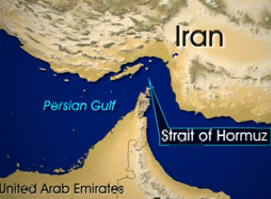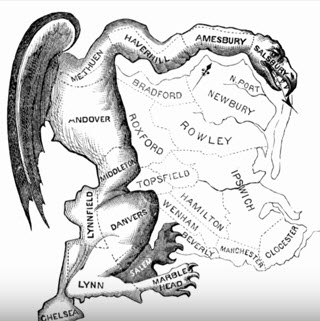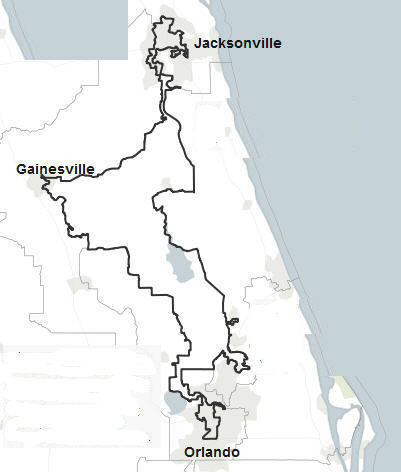
Recess Appointments and Constitutional Games
<|71||Don’t like a law? Cripple it>
The Constitution made an appearance recently when President Obama filled three seats on the National Labor Relations Board (NLRB) and named Richard Cordray to head the Consumer Financial Protection Bureau. It is the Senate’s power to confirm or reject presidential appointments, but a passage in the Constitution allows the President to “fill up vacancies” without that approval if the Senate is not in session.
Both the Senate and the House were in recess since before Christmas and nearly all of January, but they will have you believe otherwise. Republicans sought to prevent recess appointments with a scheme straight from the Constitution. Here’s how it works:
The Senate cannot be in recess for more than three days without the approval of the House. Accordingly, the Republican-controlled House denied the Senate permission for its January recess. But the House, too, was in recess, so to make that demand, it had to keep its own lights on with so-called “pro forma” sessions. At the Senate, all that was required to obey the House was for a single Senator — volunteered by the Republicans — to show up every three days to gavel sessions that could last as little as a few seconds.
That intricate minuet supposedly proved that the Senate was in session and the President was not free to make appointments.
The Justice Department gave the President its blessing, though, pointing out that, because the “standing order” of the Senate was that no business may be conducted during the pro forma sessions, it was incapable of receiving and acting upon appointments by the Executive. Ergo, the President was free to make the recess appointments.
A Wall Street Journal editorial titled “Contempt for the Constitution” said hold it right there. The Senate “does most of its work by unanimous consent, meaning without objection from present Members and without a vote or quorum”. So that single Senator, the only one present, could rescind the standing order and….
Enough of that. Congratulations for getting this far and welcome to the world of Constitutional convolution. The purpose of the rules is clearly to keep one or the other house of Congress from wandering off and neglecting its duties, but the rules are now being used to set up intricate gotchas to hog-tie the Executive branch with sham sessions.
Republicans are irate. Charles Grassley, Senator from Iowa, called it “President Obama’s blatant attempt to circumvent the Senate and the Constitution”. No mention of the impropriety of refusing to approve reasonable presidential appointments. And of course no mention of the reason for doing so — that Republicans do not like the Dodd-Frank financial reform bill, which established the Consumer Financial Protection Bureau. That the Act was passed by Congress carries no weight. The new ethic is to reject the democratic process by crippling any disliked law. So, because the new consumer bureau legally cannot act until a director is in place, the Republican intent was to block anyone Obama proposed.
Republicans also moved against the Roosevelt-era NLRB, which passes judgment on union matters. From December 2007 until March 2009, term expirations had left the five-member board with only two members. That’s not enough for a quorum, so the board could take no action. Republicans in the Senate blocked any appointments to keep it that way.
The question now is whether this dispute will move to the courts. And whether, if it does, it will be judged narrowly, which would string together several threads of the Constitution to say the Congress can do whatever it wants, or whether the court would look beyond to motive — the deliberate obstruction by Congress of a law passed by that Congress — and find an abuse of Constitutional rules.
Did we forget to mention, though, that it’s not just Republicans? The Democrats invented the ruse of pro forma sessions in 2007 to quash George W. Bush appointments. It’s reprehensible by all, and such cynical throttling of the functions of government is one of the reasons the approval rating of Congress currently stands at historic lows of 9% to 14%, depending on which poll.
Rattling the Sabers at Iran
The geography of the planet has always been a determinant of power and a decisive influence over the outcome of war. Yet judging from the actions of Congress, and the bravado of both Republican candidates and the Administration, a geography course won’t be found on their school transcripts. Have they looked at a map? Iran sits at unique location on the Persian Gulf, not only bordering a body of water through which 20% of the world’s oil passes daily, but a at spot where a spine of
We’ll get to just how serious is Iran’s ability to do battle in a moment. First, the situation.
Iran’s other straits are dire. Sanctions have been ruinous for its economy, its currency is in free fall, Europe has agreed in principle to an embargo of Iranian oil, and the U.S. president is now required by a 100-to-0 vote in the Senate to sanction any company doing business with the Central Bank of Iran. That step is the most severe of all because it would impede Iran from selling its oil, which undergirds 60% of its economy. In retaliation, Iran has threatened to block the Strait, has told the recently-departed carrier U.S.S. John C. Stennis and its battle escort not to return to the Gulf, and, in a show of intent, has just conducted 10 days of naval maneuvers near the Strait with a vow to repeat those exercises soon. The latest sanctions will prove drastic for Iran and would seem certain to provoke reaction. So, although weakened by two wars and a comatose economy, we are quite ready deliberately to trigger yet another war. Everyone seems all for it, without much forethought about the consequences.
President Obama will need to conduct a delicate balancing act, phasing in the sanctions beginning at the end of January while simultaneously preventing oil shortages if they succeed in choking off Iran’s export of 2 million barrels a day. Shortages would trigger an increase in the price of gasoline; it’s an election year and he, not the Senate, will get the blame. It gets far worse if the Strait becomes a battleground. The estimate is that the price of oil will zoom by 50%.
♦ Mitt Romney has said, “the United States of America is willing, in the final analysis, if necessary, to take military action to keep Iran from having a nuclear weapon”. ♦ Rick Santorum: “Iran must not get a nuclear weapon and we will go about whatever it takes to make sure that happens”. ♦ Newt Gingrich: “We could break the Iranian regime, I think, within a year”. ♦ Defense Secretary Leon Panetta says, “The United States will not tolerate the blocking of the Strait of Hormuz. That’s another red line for us”. Using back channels, the Administration has now said the same to Iran. At least that suggests that officials no longer seem complacent; earlier comments seemed to assume that Iran is bluffing. If most of Iran’s economy is reduced to rubble by the new sanctions, we should assume that the Iranian government, which has been issuing threats of its own, could find itself forced to act lest it betray weakness to a restive public. The severity of our actions is forcing their hand. So be it, one could say. Action against Iran looks increasingly unavoidable. But the prevailing attitude of the Administration and those Republican candidates is that America’s military might is invincible wherever it goes. That pays no attention to geography and we ask whether we have chosen the right battlefield.
strait talk That technology is alarming. There are mines that are virtually non-detectable, that can “swim” underwater just above the seabed for miles and be guided to exact geographical coordinates, where they will then drop and immerse themselves into the seabed. Pre-programmed to recognize the magnetic and acoustic signatures of specific ships, they can be fired remotely and from great distances. When fired, they do not simply explode but rather launch a missile at the identified ship directly above, or angled to within a certain radius. The Strait has been a subject of threat and counter-threat before, making it probable that Iran had reason already to have extensively mine the Strait with such highly advanced mines in preparation for a day such as this. Do we think that Iran, naval maneuvers notwithstanding, would never confront the far more powerful U.S. Navy? Perhaps not, but there were reports in 2006, the last time the Hormuz choke point was in the headlines, that its Revolutionary Guard Navy had prepared for a massive assault on international shipping in the Persian Gulf to disrupt trade. Then there is the serious threat that that ships have become vulnerable in the face of missile technology. The strait is reportedly targeted by Iran with anti-ship missiles. If an American carrier, with its crew of 5,000, were struck, it would mean all out war.
Not even missiles are needed. Four years ago, five speedboats taunted three U.S. warships entering the Gulf in a provocative action that almost drew our fire. Speedboats may seem to be no match for powerful naval ships, until one remembers that an even lesser suicide craft blew a hole in the destroyer USS Cole, when it was docked in Yemen in October 2000, killing 17 sailors. More ominous still, a war game conducted by our Navy in 2002 showed that warships are disturbingly susceptible to waterborne guerrilla tactics. In that simulation a Navy convoy lost 16 major ships, including an aircraft carrier, in a matter of minutes to a “swarm” of such speedboats.
This article in Foreign Affairs by Colin H. Kahl designed to prevent advanced navies from operating in the shallow waters of the Persian Gulf. These systems integrate coastal air defenses, shore-based long-range artillery and antiship cruise missiles, Kilo-class and midget submarines, remote-controlled boats and unmanned kamikaze aerial vehicles, and more than 1,000 small attack craft equipped with machine guns, multiple-launch rockets, antiship missiles, torpedoes, and rapid-mine-laying capabilities. The entire 120-mile-long strait sits along the Iranian coastline, within short reach of these systems.
Our Navy says it has a plan, but it may be in for a devastating surprise. 
land rising northward from the Emirates squeezes the waterway to form a strait — the strategic Strait of Hormuz, a waterway as little as 21 miles wide with Iran looming over its northern shore like an open hand poised to choke a passerby.
Obama’s Balancing Act
There have been threats in the past to mine the strait or to sink ships to block its channels. The Chairman of the Joint Chiefs has mentioned using “minesweepers”, but how would they cope with the far more advanced mine technology developed by China and Russia and, it is believed, supplied secretly to Iran? China, especially, has shown indifference to Iran’s nuclear aspirations and is focused on Iran’s oil.
School of Foreign Service at Georgetown University’s School of Foreign Service paints a still more alarming picture of Iran’s preparations which are…
How Bad Is Income Inequality?
The year of the protester has stamped the concept of the 99% and the 1% indelibly into the national consciousness. A new survey by Pew Research says 66% of Americans believe there are “strong conflicts” between rich and poor, up from 49% just two years ago. Doubtless you’ve seen statistics such as “the top 1% of Americans earn 21% of all income” expressed many ways (even right here). Less explored is how big is the income gap between the two? First, what income level qualifies for membership in the 1% elite? Few studies are all that current, but an analysis of 2005 IRS data says the top 1% consists of any household earning $343,927 on up. About 1.4 million households can make that claim, and the 21%-or-so of all U.S. income they take in year after year led to their owning 37% of all the wealth in the nation, an Economic Policy Institute report says. That is a seriously dispropor- tionate share, but one then finds that it hides just how rich is the infinitesimal sliver at the very top of the scale — the 0.1%. That’s one tenth of the 1%, one in a thousand households, yet they earn fully half the income of the 1%, according to 2008 data collected by University of California economist Emmanuel Saez. So just who are they? The demon Wall Street bankers might be your guess. Not so, as it turns out. Economists who have mined the codes for profession and industry that we enter on 1040 tax forms tell us that the biggest group — 41% — are executives at non-financial companies. Managers at financial firms or financial professionals at any sort of firm account for less than half of that — 18%. Inflation-adjusted executive compensation of these two categories — 60% of the top 0.1% — has roughly quadrupled since the 1970s, even as pay for 90% percent of Americans has languished. What does an individual in the top 0.1% look like? Some examples from all executive groups in 2010: ♦ The highest-paid CEO was Philippe Dauman of Viacom, who made $84.5 million in just nine months. (Viacom changed its fiscal year-end to September from December.) ♦ Right up there was Ray Irani, CEO of Occidental Petroleum, who was paid $76.1 million last year, up 142% from the previous year. ♦ Lawrence Ellison of Oracle, the software giant, saw his paycheck nicked by 17% but still did handsomely with $70.1 million. He was worth $26.3 billion in stock and other holdings in Oracle in 2010. ♦ Jamie Dimon of JP Morgan Chase took home $20.8 million in salary, bonus and stock options. ♦ General Electric CEO Jeffrey Immelt got $28.5 million, up from $9.8 million in 2009 even though GE’s stock price drooped 50% over the period. These are 2010’s extreme cases, one could say, but CEOs at 200 U.S. companies earned a total of $3.4 billion in 2010, a 23% increase from the year before, and an average of $17 million each. Bloomberg News tallied that the amount would provide a median wage to 102,325 workers. Paychecks have grown so large that, of the 100 highest paid corporate chief executives in the U.S., 25 took home more than their company paid in 2010 federal income taxes. Performance Is irrelevant The rapacious pay packages awarded to the subset of executives who got fired tells us even more about how corporations are being pillaged. Signing bonuses have become commonplace, even for execs who are unemployed at the time of hiring. Lavish severance is then paid when the CEO is found wanting and shown the door. As example, Léo Apotheker had been fired from Germany’s SAP when Hewlett Packard took him in, yet he was paid $10 million before a day’s work. A mere 11 months later, after laying waste to the company, he was sent packing — but unaccountably handed another $13.2 in cash and stock as severance. In just a few short years before, HP had paid Mark Hurd $12.2 million in severance and Carly Fiorina $21 million before that. Such examples of giveaways abound. Compensation consultants, hired by corporate boards, invariably recommend that pay packages be raised to compete with other firms. The CEO often doubles as the board chairman, thus guaranteeing an elevated recommendation by the consulting firm that would otherwise risk not having its contract renewed for next year. Corporate boards are stocked with officers of other firms. A firm’s directors parlay the increase they vote to pay a CEO at the firm they oversee into demands for themselves at their own companies. The SEC several years ago began requiring companies to disclose details of management compensation, and the Dodd-Frank financial reform bill added a provision referred to as “say-on-pay”, whereby shareholders can express views on executive pay. But, Institutional Shareholder Services reported that, as of earlier this year, a mere 38 of the largest 3,000 companies had their pay plans voted down. Few investors are willing to fight. What’s the point? The votes are nonbinding under Dodd-Frank. result? a huge income gap What we are witnessing is a massive transfer of wealth to create an ultra-rich class — a corpocracy. The rising pay for company executives is a critical feature in the widening income gap, a mounting body of economic research indicates. And the gap is widening. According to Berkeley’s Saez and fellow economist Thomas Piketty of the Paris School of Economics, between 2002 and 2007, 65% of all income growth in the U.S. went to the top 1% of the population. The average pay of top executives in inflation-adjusted dollars is eight times what it was in the 1950s. When such facts are brought to light, the rest of us are accused of “class warfare”. As for the rest of us, we may like to view ourselves as a middle class country, but “This plutocracy is emerging at a moment when globalization and the technology revolution are hollowing out the middle class”, writes Chrystia Freeland in The Atlantic Monthly. That conclusion is inescapable when the bottom 80% of households now receive less than half of total income, few jobs are being created, and the U.S. standard of living has declined more steeply over the last three years than in the five decades the government has tracked this index — with today’s average American earning $1,315 less in disposable income than in 2008. One study shows that, whereas the average CEO earned 40 times the pay of the average worker in the 1970s, the ratio is now 300 times. The Institute for Policy Studies found that in Standard & Poors’ 500 largest U.S. companies, the ratio of what the average CEO is paid and what the lowest paid worker takes home is 263 to 1. Paul Krugman, economics columnist at The New York Times, makes the point that this “extreme concentration of income is incompatible with real democracy”. there ought to be a law One Dodd-Frank rule calls upon companies to publish the ratio of the boss’s pay to that of the median worker, median meaning that worker exactly at the midpoint of a list of all employees ordered by pay amount. Corporations are of course pressuring Congress to overturn this rule and the SEC, which must write its fine print, has been deluged with squawks. Companies say that it would be unacceptably costly to come up with the number — a ludicrous bluff given that every scrap of pay data sits in computer databases for easy analysis by software. In principle, most of us do not like the specter of “wage controls”, even at the top. But public companies, subject to laws that govern their behavior and overseen by the SEC, are supposedly owned by their shareholders. At what point do we say that a board of directors and a CEO, when they mutually bestow outsized gobs of cash and stock on each other, are stealing from the shareholders? Given that justification, no less a justification than any other SEC controls, consider such a law would look like. One clause would limit the pay of anyone in management to X-times the pay of the lowest worker. At the very least, that would beneficially force the most avaricious of CEOs to boost the pay of the whole bottom phalanx of employees in order to preserve his or her paycheck. Part two would stipulate a ratio of Y-times the compensation of the company’s median worker — a double-check that might be needed to foil the mischief a single criterion might invite. The lower of the resulting CEO pay levels would prevail. All forms of compensation would be counted for management and workers alike: payroll, pension and 401k contributions, health plans, stock grants (options are recognized as a problem), deferred pay, etc. All forms of employees — U.S.-based only — would be in the pool to prevent gaming the system with contract workers. And the penalties for violation? Unlike the SEC’s habit of fining the corporations, which means shareholders effectively pay the bill, the offending malefactors should be fined — perhaps a sizable multiple of the amount of overpay.
Unfortunately, there’s a problem with this scheme: just imagine trying to get that law through this Congress.
Will Your Vote Count in the Coming Election?
<|||>In parallel with re-engineering voting laws are the groups — Democrat and Republican — fighting for or against changing the electoral map. Once every ten years, based on the population census, every state must reconfigure its voting districts, first to conform to the number of congressional representatives its newly-counted population permits, and then to arrive at approximately equal numbers of voters in each district. That upheaval gives either party the opportunity to redraw districts to lock out the other party.
The goal is, on the one hand, to draw a boundary around neighborhoods that vote for your own party to guarantee that your candidate will be elected, state and federal, or, on the other hand, to cordon off the maximum of voters from opposing groups into as few districts as possible to minimize the number of legislators from their party.
There’s nothing new about this practice. Called gerrymandering, the word derives from 
The 1812 cartoon in the
the shape of one of Gov. Gerry’s contrivances.
1812’s governor of Massachusetts, who rearranged election districts to his liking, the contorted shape of one of them resembling a salamander.
CNN offers North Carolina as example in this report, where district lines were drawn so as to corral 49% of all the state’s African-American voters into just three of the state’s 13 electoral districts, leaving the remaining districts mostly white (and Republican). Such maneuvering has lasting consequences. The districts do not change until the next census ten years away.
The last 10 years demonstrate: only 22% of the seats in the House of Representatives changed hands during the entire decade. In California, a
Gerrymandered district in Florida, where areas are strung
together by a connection no wider than a road to ‘capture’ the
African-American population and “bleach” the surrounding area.
single seat out of 53 switched party control during those years. For the decade to come, only California has turned over redistricting to an impartial board.
Redistricting is complex, and as one might expect, software companies have obliging created the tools for apportioning voters to districts. This company is one of several.
Sample output from Maptitude redistricting software.
What is lamentable is that the same software logic could be used to rid us of gerrymandering for good. Beginning by dividing a state into the nearest to equal size rectangles that irregular borders permit, each area could then be repetitively adjusted in shape and size — with no regard whatever to political parties and ethnic groups — until optimally equal populations occupy each district. Job done.
So where does this leave you? Whereas you may satisfy the new voter eligibility laws as they come into being, in our distorted democracy, your vote may not count at all if you live in a district rigged to be guaranteed for the political party you disfavor.
Bill Moyers on Corporate Takeover
Matt Taibbi on the Election
Obama Signs a “Terrible” Law
While the nation was distracted noon to midnight by five bowl games, President Obama, as his last act in 2011, stealthily signed a defense appropriations bill on New Year’s Eve containing a
Inmate treatment at Camp X-Ray, Guantanamo
Bay, Cuba. Americans may now be sent there.
provision that authorizes indefinite detention of any U.S. citizen thought to pose a possible security threat.
You will need to turn over a new leaf. Be careful what you say in public. Be guarded writing e-mail (the government has access to everyone’s). Be circumspect before posting to Facebook. Because all the law requires in suspicion.
The President had for months warned Congress that he would veto the bill because of the detention measure, authored by Senators John McCain (R-AZ) and Carl Levin (D-MI), presumably agreeing with Representative Ron Paul (R-TX) that this bill is “one of the most anti-liberty pieces of legislation of our lifetime…destructive of our Constitution”.
But in yet another jaw-dropping about-face, Obama said he would sign it once modest changes were made to his satisfaction — changes that merely remove wording that the White House objected to for infringing on the powers and discretion of the executive branch. That, it turns out, was all that mattered to the president. As Glenn Greenwald’s outstanding reporting (here and here) at Salon.com makes clear:
“his veto threat was not grounded in the premise that indefinite military detention is wrong; it was grounded in the premise that it should be the President who decides who goes into military detention and why, not Congress”.
Thus, Obama, who “taught courses in constitutional law at the University of Chicago”, according to FactCheck, and “has regularly referred to himself as ‘a constitutional law professor'”, shows himself not to give a damn about civil liberties, signing into law a constitutional atrocity.
Suppose you committed some indiscretion, said the wrong thing as a joke, possibly just a prank, a misunderstanding. Some ambiguity that could be misconstrued as a terrorism threat. Or you contributed innocently to an organization whose appeal for help seemed noble but which proved to be a front for a terrorist group. Under this new law, you could land in a military prison without due process, without hope of a trial, classified as an “enemy combatant”. In fact, if terrorism is the suspicion, the military does the apprehending; even the FBI is shut out. You would effectively disappear.
On the question of whether the law applies to U.S. citizens, there was this exchange when the bill was debated in the Senate:
Sen. Rand Paul: “My question would be, under the provisions would it be possible that an American citizen then could be declared an enemy combatant and sent to Guantanamo Bay and detained indefinitely.”
Sen. McCain: “I think that as long as that individual, no matter who they [sic] are, if they pose a threat to the security of the United States of America, should not be allowed to continue that threat.”
Another Senator, Lindsay Graham, backed the law and said, referring to a section of the bill, “1031, the statement of authority to detain, does apply to American citizens and it designates the world as the battlefield, including the homeland.” As Common Dreams points out,
“that section empowers the President to detain such persons indefinitely without trial or to try them before a military court or to transfer them ‘to the custody or control of the person’s country of origin, any other foreign country, or any other foreign entity.’”
Thus, with no sorting out of whether “such persons” are U.S. or foreign, anyone apprehended could be transferred to any of the three venues.
So let’s say no amount of aggressive questioning dislodges your insistence that it’s all just a mistake, because that’s all it was in fact, and you have no other truth to offer. Clearly, you need more persuading. You could be “rendered” to another country where torture is common practice, so as to give the U.S. authorities deniability that any such treatment occurred.
Wouldn’t happen? It already has. Maher Arar, a Canadian engineer, says U.S. officials grabbed him changing planes in New York in 2002, and rendered him to Syria for 10 months where he was tortured. Federal aviation records confirm the extradition flight and many others. And read this report by Chris Hedges at Truthdig about the treatment of Syed Fahad Hashmi, a U.S. citizen, held without trial in solitary confinement in a Manhattan jail.
Greenwald further tells us that the original draft of the bill ruled out American citizens as subject to the law, but the White House demanded that the provision be restored giving the executive branch — the president — the power to pluck an American off the street and place him or her in a military prison with no prospect for a trial. The law thus chips away at the Posse Comitatus Act of 1878 which has seen to it that the military is not used inside the U.S. for law enforcement. Ignoring that law flies in the face of what this administration itself has said, that earlier provisions of the bill were “inconsistent with the fundamental American principle that our military does not patrol our streets.”
And the military doesn’t want the job. Nor do many others at the top of officialdom. This editorial in The New York Times calls the bill “terrible” and says:
Nearly every top American official with knowledge and experience spoke out against the provisions, including the attorney general, the defense secretary, the chief of the F.B.I., the secretary of state, and the leaders of intelligence agencies.
The President forgave himself with a signing statement, a disclaimer used

“…important traditions and values as a Nation” completes
the signing statement.
extensively by the second President Bush, whereby a president says his administration will not enforce particular passages of a law. Yes, but it now is the law, and the signing statement is no inhibitor of what future presidents may do.
We fought in two world wars, Korea and Vietnam with surpassing bravery only to see 9/11 throw us into a panic that quickly led to a collapse of those same human rights principles that we endlessly and sanctimoniously hold up to the world as example. But back home we passed and extended the Patriot Act, immediately resorted to torture, or rendition to other countries that practice torture, began wire tapping and invasion of homes without requirement for court orders, and set up an offshore prison at Guantanamo where we could abandon habeas corpus and the right to trial.
The panic persists still, or is the greater reality that fear mongering serves to facilitate the motives of a government which, ten years on, finds that it enjoys reasons to curtail civil liberties, chiseling into stone a parallel set of laws to control the citizenry.